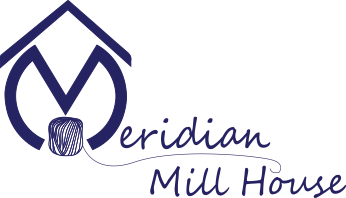
Throughout human history, plant and animal fibers have been used to create textiles. Why? Because natural fibers are incredibly versatile, readily available, and have desirable performance characteristics like breathability, strength, and durability. To feed your curiosity, let’s have a topline look at how natural fibers like cotton and wool are transformed into the yarn you know and love.
Types of Natural Fibers
Natural fibers for yarns come from either plants or animals. Common sources from the plant kingdom include cotton, hemp, linen, and bamboo. From animals, we get popular fibers like wool, silk, angora, cashmere, and mohair.
Natural Fiber Collection & Processing
The way natural fibers are collected and processed varies based on the type of plant or animal from which it is derived. Generally, plant fiber can be extracted through mechanical, chemical, or soaking procedures. Animal fibers are collected by shearing or combing the animal to collect its hair.
Of the natural fibers out there, two of the most popular are cotton and wool. Cotton is derived from a plant, whereas wool comes from a sheep’s coat. For this article, we’ll focus on what it takes to transform raw cotton and wool into yarn.
Cotton Fibers
Collecting Cotton Plant Fibers
Cotton comes from a plant that belongs to the mallow family, which also includes plants like hollyhock and hibiscus. It is a shrubby plant with capsules called bolls that contain seeds surrounded by a downy white fiber.
Cotton harvesting involves handpicking or harvesting using agricultural equipment. Once picked, the cotton fiber is separated from the plant’s seeds in a process known as ginning. After the fiber is free of seeds and other debris from the field, it can be made into yarn.
Processing Cotton Plant Fibers for Yarn
Cotton fiber is cleaned and combed in a process called carding. The combing action finishes the job of cleaning and straightening the fibers and makes them into a soft, untwisted rope called a sliver. Yarn is made directly from the sliver by quickly rotating and twisting the material, which is then wound up on bobbins, cones, or large drums. At Meridian Mill House we are able to create beautiful cotton boucles, like Belmont and Lowell, in our hollow spinning department.
Wool Fibers
Collecting Wool Fibers
We collect sheep’s wool in a process known as sheering, which involves cutting or shaving a sheep’s coat away from its skin. Most sheep are shorn of their winter coats in the spring, and then the wool is cleaned in a process known as skirting. This involves taking the raw wool through a wash, rinse, and spin action, and then the newly washed wool is dried before processing.
Processing Wool Fibers for Yarn
Once wool fibers are dried, they are passed through metal teeth that straighten and blend the material into slivers. The process, called carding, also removes any dirt or debris missed during skirting. Once carded, the wool is ready for spinning. Spinning involves uniting the fibers and twisting them to form a strand of yarn. After the yarn is spun, it is wrapped around bobbins, cones, or large drums. Meridian Mill House is proud to provide over 20 types of wool and wool blend yarns.
Natural Fibers & Yarn From Meridian
Explore our full line of natural fiber yarns online or reach out to let us know what else you’d like to see in our shop.




